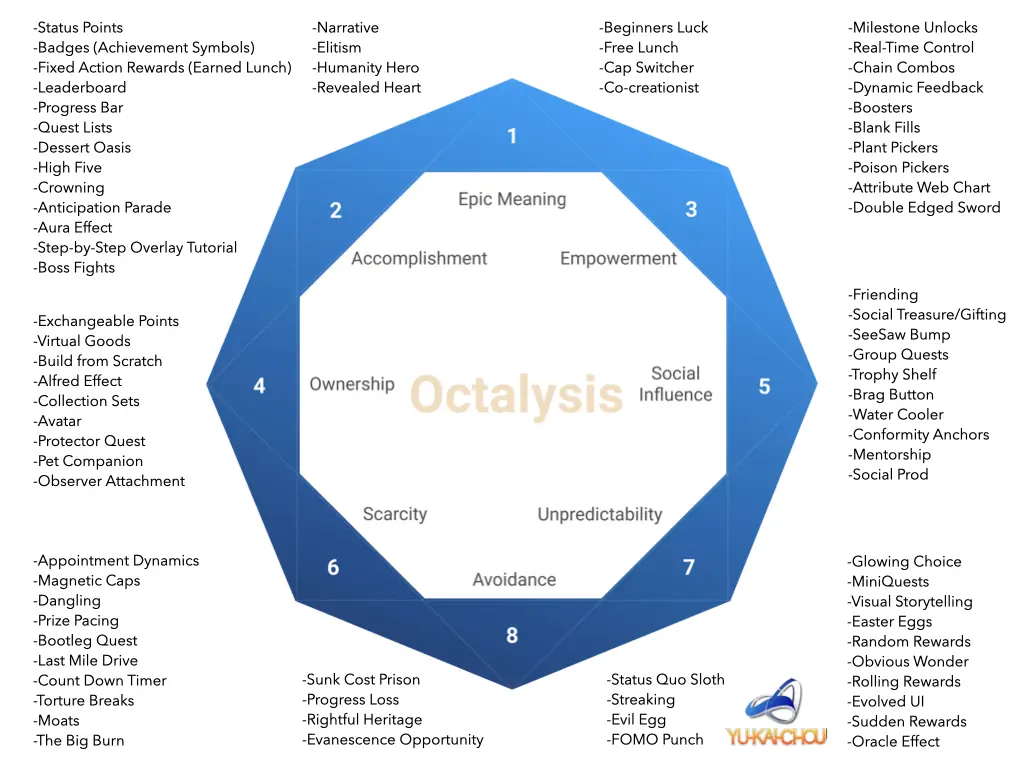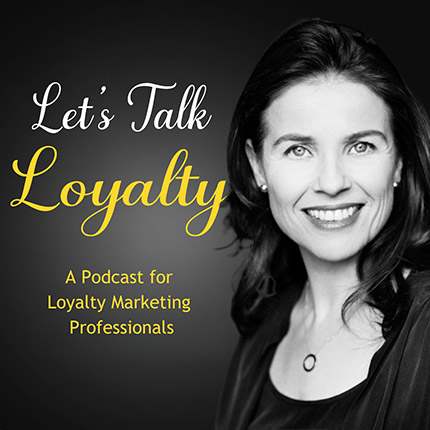In Part 1 we discussed the impact of human psychology on transactional loyalty. This time we delve into its impact on emotional loyalty.
The Octalysis framework, proposed by behavioral design expert Yu-Kai Chou offers a handy framework to evaluate how human psychology impacts emotional loyalty. It emphasizes ‘human-focused design’ instead of the more common ‘function-focused design’, factoring in intrinsic human motivators to optimize engagement.
It’s worth remembering two ground rules of his framework:
1. Motivation is not homogenous. Some push us forward in an inspiring and empowering way while others do so in a more manipulative and coerced manner, playing on a sense of FOMO or urgency. (Think camaraderie vs. peer pressure).
2. Core drives can be classified as left-brain or right-brain core drives*.
a. Left brain core drives are focused on extrinsic motivation – things you do for a reward or goal. The process itself doesn’t hold value. While initially powerful, it quickly becomes stale once the reward or goal is achieved.
b. Right brain core drives deal with intrinsic motivation – things you do just because you enjoy doing them. You may even pay money to experience them and would continue to do them despite setbacks because they add value.
*These are symbolic classifications and are not based on neuroscience.
Let’s look at the 8 elements of the Octalysis framework and how they apply to loyalty program design:
1. Epic Meaning & Calling: alludes to our desire to do something greater than ourselves, or be the “chosen” one for something special. This could be leveraged by calling members to donate their rewards and points for a cause or be selected or ‘chosen’ for exclusive membership privileges based on frequency, duration of membership, or point value.
2. Development & Accomplishment: this is pegged on the internal human drive of making progress and overcoming challenges. For instance, while all members of the Harley Owners Group are special just for owning a Harley, some enjoy Hall of Fame status for finishing the most challenging rallies.
3. Empowerment, Creativity & Feedback: refers to the active and creative process of trying different combinations and figuring things out from multiple fresh perspectives, aided by feedback. Think of Lego’s basic blocks that offer endless possibilities. Empowering members to mix and match program rewards, or co-create a unique, non-linear journey helps harness this motivator.
4. Ownership & Possession: a sense of ownership motivates people to protect and improve what is theirs. Exclusive collectibles, personalized avatars, and even referral programs that harness the member’s sense of ‘recruiter burden’ (feeling responsible for those they have referred the program to) are great examples, and we are seeing more of them with NFT collectibles entering the loyalty and reward ecosystem.
5. Social Influence & Relatedness: If you’ve had a platinum-tier member breeze past your gold-status self at the check-in counter, and vowed to get there yourself, you’ll know what this means. Rewarding members by letting them reward their friends is another way for programs to harness the power of social influence.
6. Scarcity & Impatience: Humans are motivated to achieve what they think they cannot have. Whether it is the scarcity of a resource or of time, loyalty programs can be designed to prod members to achieve seemingly out-of-reach goals.
7. Unpredictability & Curiosity: everyone wants to know what happens next! For instance, a credit card offers loyal members surprise cashback on random swipes. The reward is small in value but the unexpectedness creates outsize moments of delight.
8. Loss & Avoidance: many brands have mastered the art of creating FOMO among consumers when it comes to motivating behavior. Losing points or missing out on privileges is one example. Streak design, like Duolingo’s daily practice streak that deploys the same gamification approach, is another way to keep people engaged regularly and over time.
Get the full episode here:
#275: Gamification Guru Explains Psychological Drivers of Engagement
👉 Share your experiments, wins, and fails leveraging psychological drivers for emotional loyalty below.
👉Want more such insights from the world’s best loyalty programs each Monday? Sign up for Monday Moments here or share with a colleague to earn your Monday karma!
The Octalysis Framework for Human-centred Design.
Image courtesy: YuKaiChou.com



